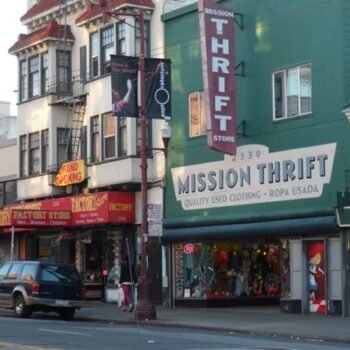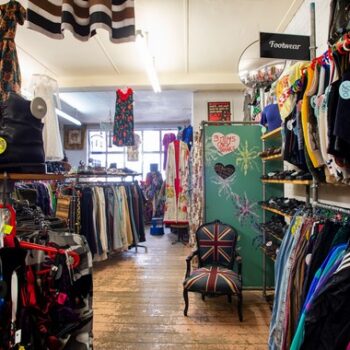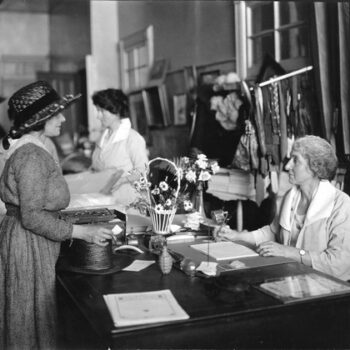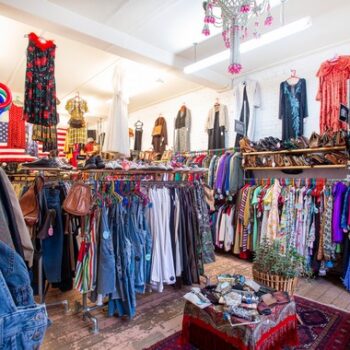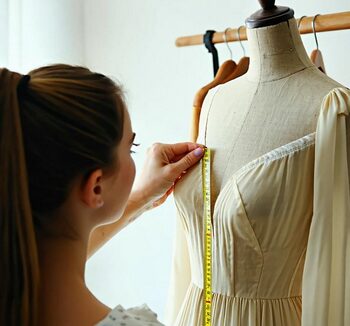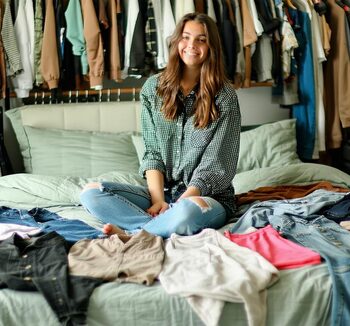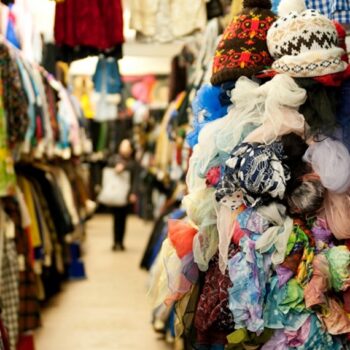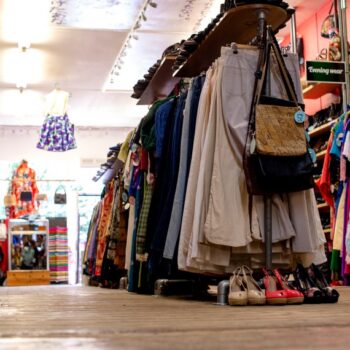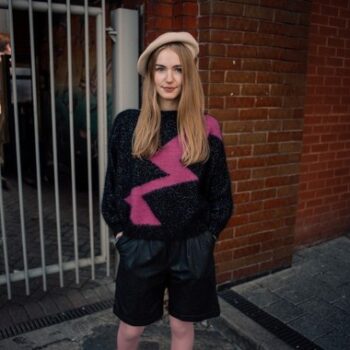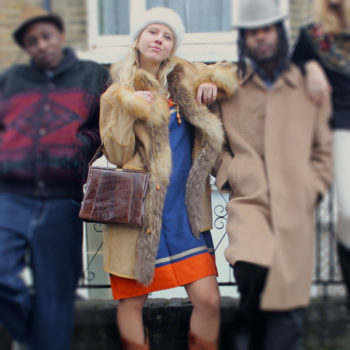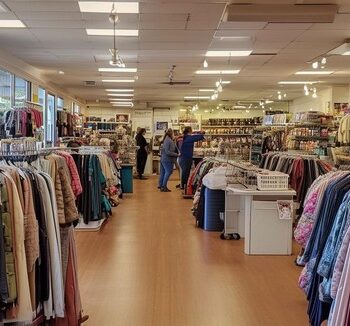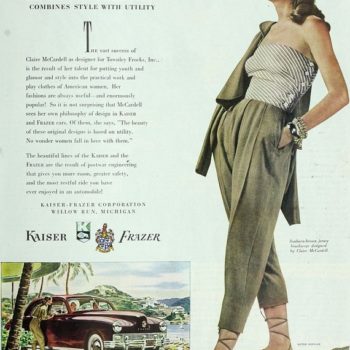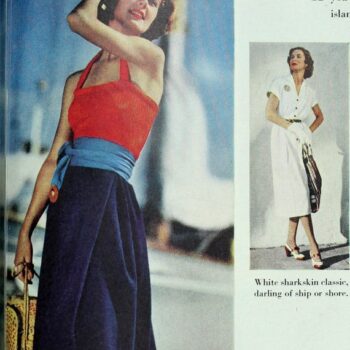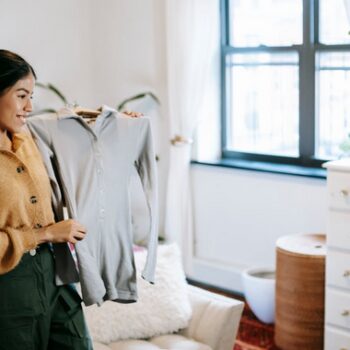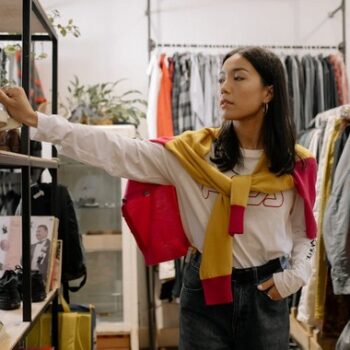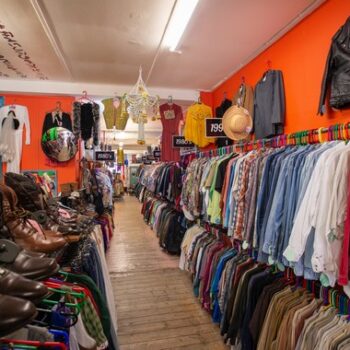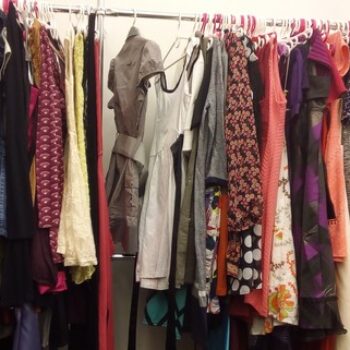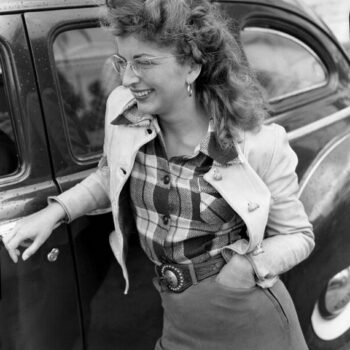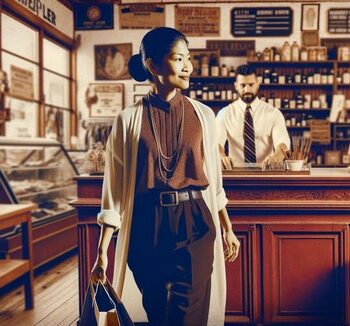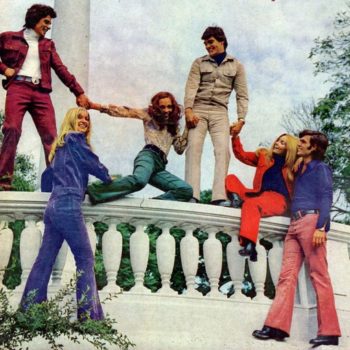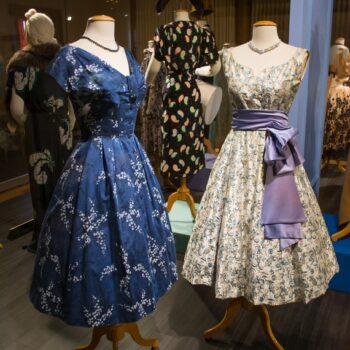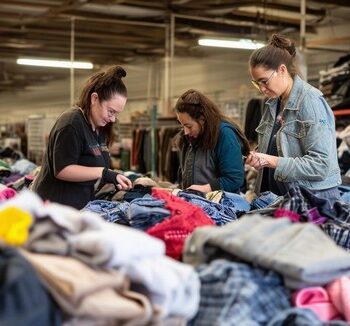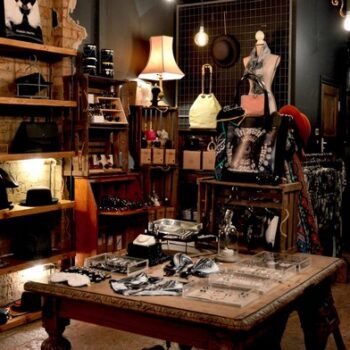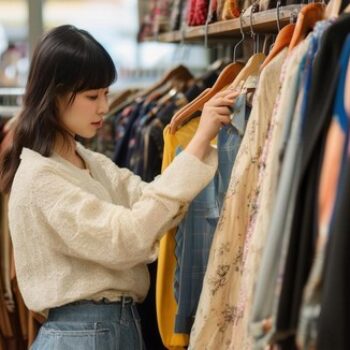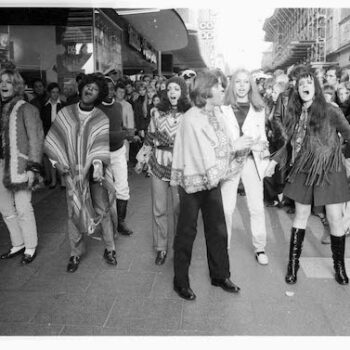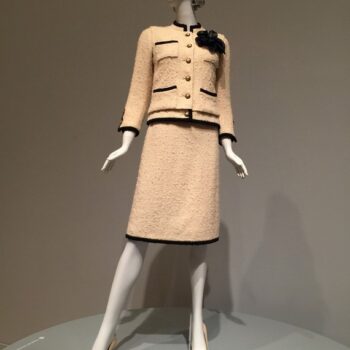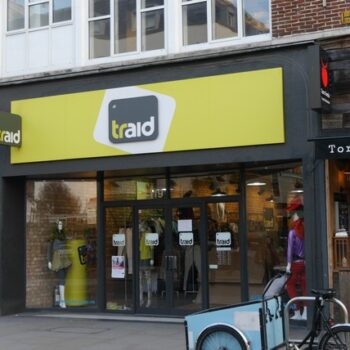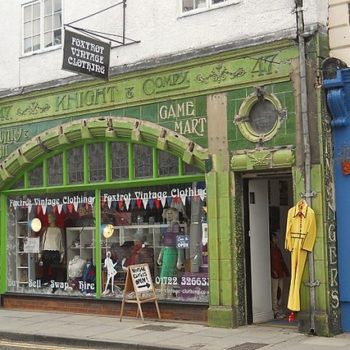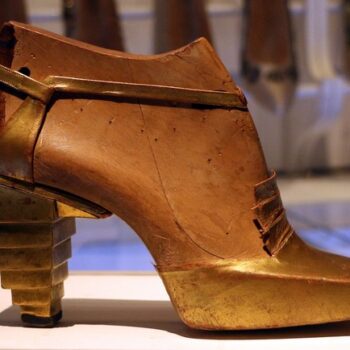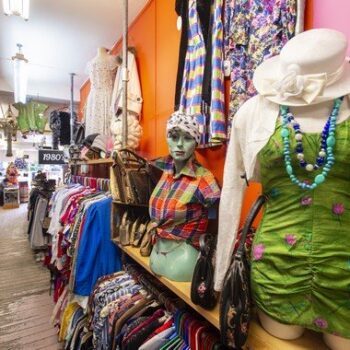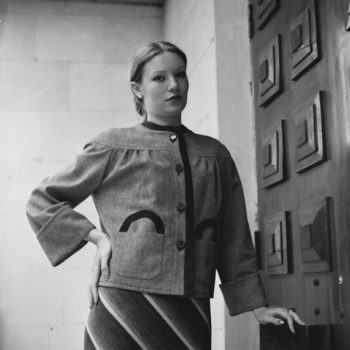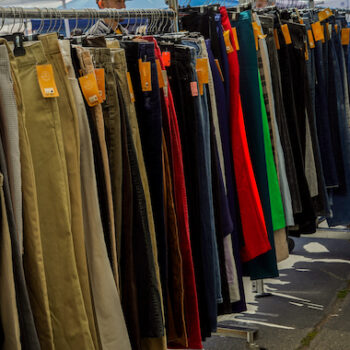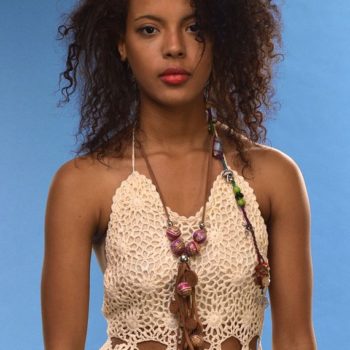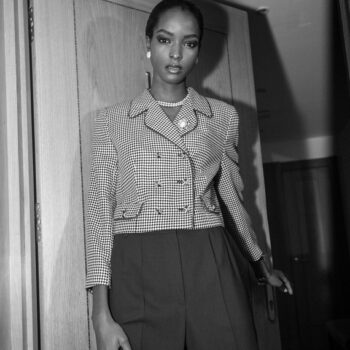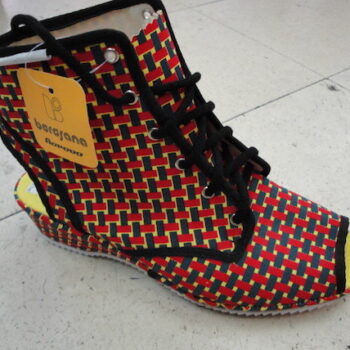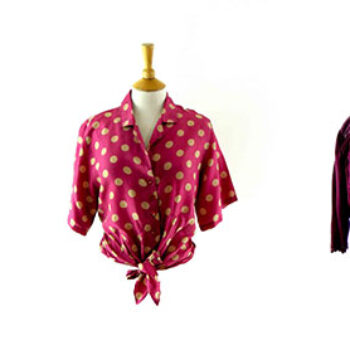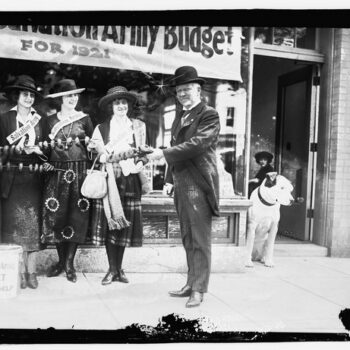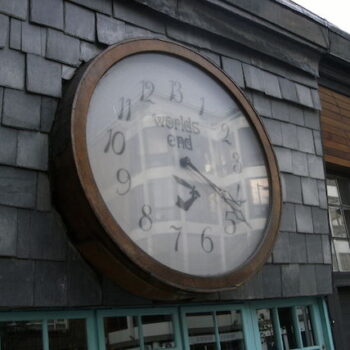What Is The Major Online Thrift Store in the UK Today
May 26, 2024Buying second-hand clothing from an online thrift store in the UK has become a significant movement, blending style with sustainability. Opting for preloved fashion isn’t just about finding bargains; it’s a conscious choice that benefits the environment. With numerous platforms available, each offering its own distinct flair, there’s never been a better time to embrace this eco-friendly trend.
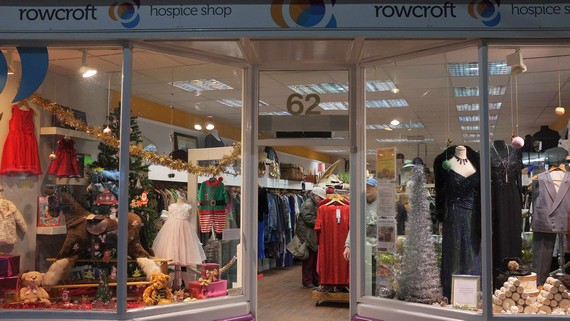
Rowcroft charity shop, Totnes by Derek Harper, CC BY-SA 2.0, via Wikimedia Commons
Environmental Impact of Buying Second-Hand
Buying second-hand clothing from online thrift stores in the UK is a game-changer for the planet. When you opt for preloved fashion, you’re helping cut CO2 emissions. For every item you buy used instead of new, you displace around 17.4 pounds of CO2 emissions.
There’s also the amount of clothing waste rerouted from landfills – think 81 pounds per person per year. Each time you shop at places like Depop, eBay, or Thrift+, you’re making a positive impact.
An Oxfam report highlighted that if every adult in the UK bought half of their wardrobes second-hand, it would save CO2 emissions equivalent to flying around the world 17,000 times.1 That’s a significant impact.
The volume of new clothes produced globally keeps surging, thanks to ultra-fast, ultra-cheap fashion brands. This leaves consumers with more garments than they can handle, leading to a massive offload after just a few wears. Second-hand platforms like Vinted and Vestiaire Collective redirect this flow and turn it into sustainable treasure troves.
The rise of these online marketplaces means a more practical approach to reusing goods. Processing second-hand items can be labor-intensive, but it’s worth it. Each item goes through human hands and eyes to assess quality. The labor might add to costs, but it ensures that every piece is ready for a new home.
Many second-hand stores are innovating. ThredUp, for instance, shifted their model to now charge for processing old clothes—a move that shores up their business while maintaining a circular economy. By Rotation and HURR have even melded rental and resale, giving items a longer, more varied life.
The resale market has growth potential, especially if seen as both a business and an environmental necessity. Experts suggest government policies to curb new clothing production could aid in balancing the scales.2 Implementing technology like scannable tags on garments might streamline the process, reducing labor costs further. It’s a step towards making second-hand fashion not just trendy, but also financially viable.
In essence, opting for second-hand clothing is like giving the planet a much-needed break. It cuts down on emissions, minimizes landfill waste, and champions a more sustainable fashion cycle. Sites like HEWI, Rites, and Sign of the Times are excellent avenues for making eco-friendly fashion choices without sacrificing style. So, next time you peek into your virtual cart, know that each click is a nod towards a greener, more sustainable world.
Popular Online Thrift Stores in the UK
If you’re looking to dive into the world of second-hand shopping online, the UK offers a plethora of fantastic platforms that make sustainable fashion choices both stylish and accessible. Here’s a guide to some of the most popular online thrift stores in the UK, each with its own unique flair and offerings.
-
eBay
A pioneer in the resale scene, eBay is an eclectic treasure trove for everything from everyday wear to rare vintage finds. Known for its vast selection and robust buyer protections like authenticity guarantees, it’s a go-to for fashion editors and budget-savvy shoppers alike.
-
Depop
Dubbed the darling of Gen Z, Depop is a vibrant hub where fashion meets social media. With a unique blend of thrifted gems and designer collaborations, it’s a hotspot for Y2K treasures and streetwear. The app’s user-friendly interface and community vibe make it a place to engage with like-minded fashion enthusiasts.
-
Vinted
For those looking to snag cult brands at lower prices, Vinted is a standout platform for vintage clothing. It offers a seamless buying and selling experience with its dedicated focus on second-hand goods. Vinted’s Item Verification service across select brands ensures shopper confidence, making it a trustworthy option to hand pick preloved fashion.
-
Vestiaire Collective
Europe’s largest resale platform for luxury fashion, Vestiaire Collective is synonymous with high-end, authenticated designer vintage pieces. Boasting an impressive selection that’s updated daily, it’s a haven for fashionistas hunting for iconic brands or that elusive statement piece. Its sophisticated interface and rigorous quality control make it a premier destination for those who prioritise luxury and authenticity.
-
Beyond Retro
Step back in time with Beyond Retro, a haven for vintage lovers. Specialising in eclectic and retro styles from various decades, this store offers an array of unique pieces that transport you to the golden eras of fashion. With a commitment to sustainability and regular new arrivals, it’s a top pick for anyone wanting to add a touch of the past to their modern wardrobe.
-
Thrift+
A UK-specific platform, Thrift+ stands out for its ease of use and quality assurance. Every item is thoroughly quality checked, ensuring no surprise stains or faux brands get past them. You can clear out your wardrobe and sell preloved items directly on their platform. With partnerships aimed at reducing fashion waste, Thrift+ integrates hassle-free shopping with a mission for sustainability.
-
Patagonia Worn Wear
For the outdoor enthusiasts, Patagonia Worn Wear is a niche platform specialising in gently used and repaired Patagonia gear. Perfect for eco-conscious adventurers, it offers a range of outdoor apparel and equipment at reduced prices, backing its quality with environmental responsibility.
Exploring these online thrift stores in the UK not only diversifies your wardrobe but also supports a more sustainable fashion industry. Each platform has something distinctive to offer, ensuring you can find pre-loved fashion that suits both your style and eco-conscious values. Happy thrifting!
Luxury Resale Platforms
Luxury resale platforms offer an unparalleled shopping experience that marries the allure of high-end fashion with the principles of sustainability. Three standout platforms in this niche are The RealReal, Sellier, and Hardly Ever Worn It (HEWI). They each bring something unique to the table, from robust authentication processes to a diverse range of luxurious items.
The RealReal is renowned for its thorough authentication process. Every item listed undergoes rigorous scrutiny by a team of experts, which includes gemologists, horologists, and brand specialists. This ensures that what you’re purchasing is not only genuine but also in the condition advertised. Their selection is vast, spanning high-end women’s and men’s fashion, fine jewellery, watches, art, and homeware. For sellers, this means your items are in good hands, authenticated to boost buyer confidence and maximise their resale value.
Sellier focuses primarily on coveted designer vintage handbags. Partnering with Matches, Sellier guarantees authenticity through a team of seasoned experts who rely on both traditional and advanced methods, including AI technology. This state-of-the-art approach scrutinizes microscopic details of each item, ensuring that only genuine pieces make the cut. The platform’s user-friendly interface and seamless integration with its luxury partner sites make it an effortless experience for buyers and sellers alike.
Hardly Ever Worn It (HEWI) brings an intimate and chic take to luxury resale. The platform was born from the realisation that many wardrobes are brimming with high-end pieces that have been barely worn. HEWI focuses on providing a space where these treasures can find new homes. Sellers can list items themselves or opt for the VIP service, where HEWI handles the entire process—from collection to customer inquiries. The items on HEWI include everything from Chanel minidresses to Jacquemus bags, each verified for authenticity and quality.
For buyers, it’s about accessing high-end fashion at more affordable prices, all while ensuring the pieces are authentic and often unique. The rigorous authentication processes employed by these platforms mean you can shop with confidence. With sustainability becoming a crucial consideration for many, buying pre-loved luxury vintage clohing is both an eco-conscious and stylish choice.
For sellers, these platforms offer a smooth, often concierge-level service that takes the hassle out of the resale process. Your items are assessed, priced competitively, and marketed to a large, engaged audience. This maximises the chances of a sale and ensures you get a fair price for your preloved luxury goods. Additionally, participating in the circular fashion economy through these platforms not only benefits your wallet but also contributes positively to the environment by reducing the demand for new, resource-intensive luxury items.3
In summary, luxury resale platforms like The RealReal, Sellier, and HEWI provide a sophisticated and secure way to explore second-hand high fashion. Their robust authentication processes, extensive range of items, and user-friendly services make them indispensable for both buyers and sellers looking to engage in sustainable, luxurious fashion.
Emerging Trends in Online Thrift Shopping
One emerging trend in online thrift store shopping in the UK is the rise of curated collections. This approach elevates the traditional thrift shopping experience by handpicking items that align with specific themes, styles, or aesthetics. Platforms like Reluxe and Retold excel in this arena, offering carefully selected pieces that cater to a discerning fashion crowd. By doing so, these platforms make it easier for consumers to find and pick second hand and vintage pieces they love and enhance the overall shopping experience by eliminating the time-consuming search through endless listings.
Another transformative trend is the integration of rental options alongside resale. Companies like HURR and By Rotation are leading the charge, allowing fashion enthusiasts to rent high-end pieces for special occasions, while also offering these items for purchase through resale. This dual approach maximises the lifespan of each garment, ensuring it gets multiple wears before it reaches the end of its usability. It’s a smart, sustainable solution that aligns perfectly with the principles of circular fashion.
Resale partnerships with major retailers are also making waves, dramatically changing the landscape of second-hand shopping. Big names like Farfetch and Net-a-Porter have incorporated pre-owned sections with vintage pieces into their offerings, providing a seamless experience for shoppers accustomed to high-end retail. This lends an air of legitimacy to the second-hand market and encourages a wider audience to consider it as a viable, stylish option. Partnering with established luxury retailers assures consumers of the authenticity and quality of the items being sold, making the prospect of buying second-hand much more attractive.
These trends collectively signal a significant shift towards a more thoughtful, sustainable approach to fashion. The integration of curated collections, rental services, and partnerships with major retailers helps demystify second-hand shopping, presenting it as a chic, responsible alternative to fast fashion. By making these platforms user-friendly and visually appealing, they’re breaking down the barriers that may have previously deterred some shoppers from exploring preloved fashion.
Economic Challenges and Solutions
Second-hand clothing businesses face significant economic hurdles that challenge their sustainability and profitability. One prominent issue is the supply vs. demand imbalance. While preloved fashion is increasingly popular, the influx of fast fashion has flooded the market with an overwhelming supply of garments. This surplus deflates the perceived and actual value of second-hand items, making it difficult to fetch profitable prices.
The nature of second-hand clothing resale is labour-intensive and costly. Processing these garments requires a careful assessment of quality and authenticity, often demanding significant human intervention. Unlike new clothing where production can be streamlined and automated, each second-hand item needs individual attention, adding to the time and cost of getting it market-ready. High labour costs, particularly in regions with higher wage standards, further strain the profitability of these businesses.
However, several potential solutions and innovations can address these economic challenges:
- Technological advancements:Implementing scannable tags, for instance, can rapidly pull up information about each garment, reducing the need for manual labour in the sorting process. Artificial intelligence and machine learning can also enhance authenticity verification processes, ensuring that genuine items are identified efficiently and accurately.
- Innovations in sorting and processing technologies:Investment in high-tech sorting facilities, which use automated systems to classify and grade second-hand clothing, can vastly improve efficiency and reduce labour costs. Industry collaboration on shared processing centres could distribute costs more equitably and foster symbiotic relationships within the sector
- Promoting consumer awareness and engagement:Encouraging consumers to consider the environmental and economic benefits of second-hand fashion can shift purchasing behaviours. Fashion influencers and celebrities can play a significant role here. Their endorsement of preloved fashion and vintage clothing can elevate its status, driving demand and helping balance the scales of supply and demand.
- Embracing circular fashion models:Platforms like By Rotation and HURR exemplify this by offering rental options for high-end fashion, subsequently selling these items when they no longer meet rental criteria. Such models ensure garments are worn multiple times, maximising their use and value.
- While second-hand clothing businesses face notable economic challenges, these hurdles are not insurmountable. Through technological advancements, supportive government policies, innovative sorting mechanisms, and heightened consumer awareness, the sector can address its current imbalances and achieve a sustainable, profitable equilibrium. These solutions make economic sense and reinforce the environmental imperatives driving the second-hand fashion industry.
Tips for Successful Thrift Shopping Online
When venturing into online thrift store shopping in the UK, having a strategy can make all the difference between scoring a vintage gem and ending up with a dud. Here are some practical tips to help you master the art of thrifting online:
- Leverage Advanced Search Functionalities:Most reputable online thrift stores in the UK offer advanced search functions. Utilise filters to narrow down your search by category, size, brand, condition, and price. Keywords are your best friends; be specific with terms like “vintage” pieces or “Levi’s jeans” or a”genuine Chanel handbag.” This specificity saves time and increases your chances of finding exactly what you’re looking for
- Set Up Alerts:Take advantage of alert systems available on many platforms. You can set notifications for specific brands, items, or keywords so that you’re immediately informed when something on your wish list is listed. This feature is especially useful for tracking down high-demand items that tend to sell out quickly.
- Check Seller Ratings and Reviews:Before purchasing, always check the seller’s ratings and reviews. A high rating and positive reviews typically indicate a reliable seller. Don’t hesitate to read through the reviews to ensure there are no red flags regarding item authenticity or quality.
- Examine Photos Closely:Photos are crucial when shopping second-hand picked clothing online. Ensure the listings have multiple high-quality images from different angles. Pay close attention to details such as stitching, labels, and any potential wear and tear. Don’t be afraid to request additional photos if needed.
- Understand Authenticity Guarantees:Many high-end second-hand platforms offer authenticity guarantees. This means every item goes through rigorous checks by experts. Opting for sites with these guarantees can provide peace of mind, especially when investing in luxury pieces.
- Know Your Measurements:One of the trickiest parts of buying clothes online is getting the fit right. Know your exact measurements and compare them with the item’s listed dimensions. Sizes can vary widely across brands, so it’s crucial to go beyond the size tag and look at specific measurements.
- Pay Attention to Descriptions:Read the item descriptions carefully. They often include vital info about the condition, materials, and any defects. Understanding condition scale terms helps manage expectations and reduce the chance of unpleasant surprises.
- Utilise Sorting Features:Sorting features are your allies in navigating large inventories. Most thrift platforms allow you to sort by newly listed items, price, and popularity. Sorting can help you quickly find fresh deals or keep within your budget.
- Be Patient and Persistent:Thrifting, whether online or in-store, often requires patience. Check back regularly and be persistent. Good deals and hidden gems can pop up anytime, and staying active increases your chances of catching them.
- Stay Within Budget:It’s easy to get carried away while thrifting. Set a budget and stick to it. Many platforms allow you to set price filters, ensuring you don’t get tempted by items outside your financial comfort zone.
By integrating these tips into your online UK thrift store shopping routine, you can navigate the digital second-hand market for vintage pieces and pick second hand with confidence. You’ll be better equipped to find high-quality, authentic items at fantastic prices, all while contributing to a more sustainable fashion ecosystem. Happy thrifting!
- The rise of online thrift stores: trends & stats for ecommerce in 2023.
- 2022 Resale Report.
- Apparel Resources. Unlocking the potential of second-hand clothing: overcoming economic challenges. Accessed June 15, 2023.
Choosing second-hand clothing is more than just a fashion statement; it’s an impactful step towards sustainability. By reducing emissions and minimizing waste, every purchase contributes to a greener planet. So next time you’re shopping online from a thrift store in the UK, remember that your choices can make a difference.



